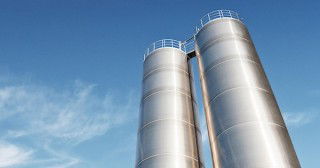Cement plant construction has begun to ease off in former cement production hotspots such as Central Europe and North America but new contracts are forging ahead in the Crimea, South America and most noticably in Africa. ICR establishes where new cement capacity will come on-stream over the next few years.
The turbulent Arab Spring revolutions in the Middle East and the long-lasting effects of the global economic crisis have impacted on what was a vibrant era of cement capacity expansion. There has since been a calming of orders which is to be expected in the current climate, but there is little slowdown in Brazil or Indonesia where new cement projects continue to emerge on the back of rising cement demand.
While China and India – the two heavyweights of global cement production – continue to push forward new capacity additions, it is the sudden emergence of Africa as a prime destination for new projects that is propelling the industry forward.
However, this time it is not just the established North African production base or those in South Africa that are seeking to build new cement plants. Less-developed countries in West, East and Central Africa are also seeking to become more capable in supplying their domestic markets. Bridging the gap between domestic cement supplies and the market requirement, which is often met by imports, is a fast-changing business in Africa.
The Dangote Group of Nigeria is one notable producer that is building several large cement plants in Africa. This new capacity will change the dynamics of cement availability and pricing, both in Nigeria and the new countries it is entering. Egyptian company ASEC is also expanding its interest in North Africa at a fast pace, while Athi River Mining East is among the most active producers in Kenya and Tanzania, investing heavily in new cement production. The growth of Chinese investors in various African locations is also much in evidence.
While Africa is building its cement sectors, Russia is revitalising its industry with Eurocement as chief protagonist as the company seeks to expand its grip on the domestic market. Eurocement is also venturing into neighbouring countries with new capacity.
A similar dominance can be seen by Votorantim in Brazil, which is ramping up its domestic production and similarly has expanded into the markets of North America, Paraguay, Bolivia, Uruguay, Argentina and Chile among others.
